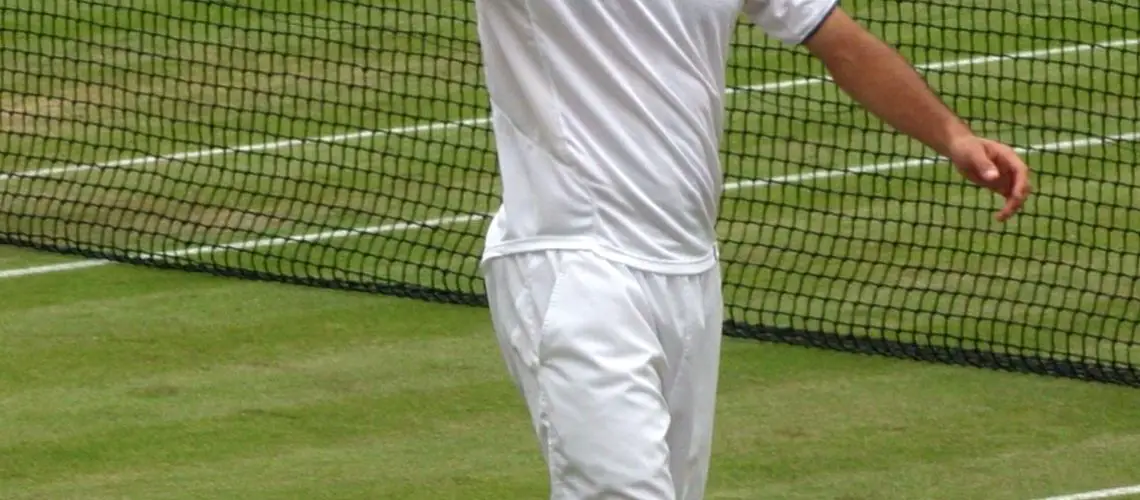We may earn money or products from the companies mentioned in this post.
Brief History of Tennis Tiebreaks

In the exciting world of tennis, tiebreaks have become an integral part of the game But have you ever wondered how this scoring system came to be? Let’s take a trip back in time to explore the origins and evolution of tennis tiebreaks
The Invention of the Tiebreak System
It was during the 1960s that the concept of a tiebreak was first introduced Before then, matches often had no definitive end, as players would continue playing until one emerged victorious by winning a certain number of sets
This marathon-like format led to some incredibly long matches that could last for hours on end In an effort to make matches more manageable and provide a clear outcome within a reasonable timeframe, tennis officials devised the tiebreak system
Evolution and Variations Over Time
Since its inception, the tiebreak system has undergone several modifications and variations The original format consisted of players competing in a seven-point tiebreaker, with the first player reaching seven points (with at least two points more than their opponent) declared as the winner
Over time, different tournaments and governing bodies implemented their own variations on this format For instance, some tournaments played nine-point tiebreakers instead of seven-points The Wimbledon Championships even employed an unusual twelve-point tiebreaker for deciding fifth sets in men’s singles matches
Importance of Understanding Tiebreak Rules in Tennis

Tiebreak rules can have a significant impact on both competitive play and spectator experience in tennis Whether you’re playing on the court or watching from home, having a good understanding of these rules is crucial
Playing Competitively or Recreationally
If you’re a tennis player, knowing how the tiebreak system works can greatly influence your game strategy Understanding when and how tiebreaks are used allows you to adapt your approach during crucial moments in a match
Additionally, being aware of the scoring system helps you maintain focus and mental clarity, as you’ll have a clear understanding of what it takes to win a set or match This knowledge can contribute to improved performance and decision-making on the court
Watching Tennis Matches as a Fan
As a fan of tennis, watching matches becomes even more exciting when you understand tiebreak rules It adds another layer of anticipation and drama, especially during close sets where players battle it out for every point
By comprehending the tiebreak system, you can appreciate the significance of each point won or lost You’ll also be able to follow along with commentators’ analysis and predictions regarding potential tiebreak outcomes
In conclusion, the history and rules of tennis tiebreaks provide fascinating insights into the evolution of this scoring system Whether you’re an avid player or enthusiastic spectator, understanding these rules enriches your overall experience with this captivating sport
Different Types of Tiebreaks

Traditional “7-point” Tiebreak (first to seven points)
In tennis, the traditional “7-point” tiebreak is a thrilling way to determine the winner of a set when the score reaches 6-6 This type of tiebreak is played and scored differently from regular games or sets, adding an extra element of excitement and strategy
“10-point” Match Tiebreak (first to ten points)
When it comes to professional and recreational matches, the “10-point” match tiebreak offers a fast-paced solution for deciding the outcome when players are tied at one set each This format keeps spectators on their toes as they witness intense rallies and crucial points that can swing the momentum in an instant
“12-point” Final Set Tiebreak (first to twelve points, only at Wimbledon)
At Wimbledon, the most prestigious tennis tournament in the world, a unique rule comes into play during final sets Instead of going into endless games until there’s a two-game advantage, Wimbledon employs a “12-point” final set tiebreak This means that once the score reaches 12-12, players engage in an intense battle where every point counts towards victory
Strategy during a tennis tiebreak

Serving tactics
When it comes to serving in a tiebreak, there are a couple of key tactics that can make all the difference First and foremost, prioritizing your first serve percentage is crucial A well-placed and powerful first serve can immediately put pressure on your opponent and give you an advantage right from the start By focusing on getting your first serves in, you increase your chances of winning the point outright or setting yourself up for a strong follow-up shot
In addition to serving with accuracy, placement is also of utmost importance By strategically placing your serves in different areas of the court, you can keep your opponent guessing and make it harder for them to anticipate where the ball will go Mixing up serves to the corners, down the middle, or even throwing in some kick or slice serves can throw off their rhythm and disrupt their return
Rally strategies
Once the rally begins during a tiebreak, there are two main approaches you can take: aggressive play or consistency-based play
If you opt for aggressive play, you aim to take control of the point by hitting powerful shots and going for winners whenever possible This style of play puts pressure on your opponent and forces them to react quickly However, it also carries some risks as it requires precise shot-making and may result in unforced errors if not executed properly
On the other hand, consistency-based play focuses on minimizing mistakes and keeping steady rallies going This strategy involves playing high-percentage shots with good depth and placement while avoiding unnecessary risks By staying patient and waiting for opportunities to present themselves, you can gradually wear down your opponent’s defenses without taking too many unnecessary risks
Knowing your opponent’s strengths and weaknesses
Understanding your opponent’s strengths and weaknesses is a crucial aspect of strategy during a tiebreak By studying their game beforehand or observing their patterns during the match, you can tailor your tactics accordingly
If your opponent has a strong forehand but struggles with their backhand, you may want to target their weaker side more often Alternatively, if they struggle with high balls or fast-paced shots, you can use those types of shots to exploit their vulnerabilities Knowing what areas to attack and what areas to avoid can give you a significant advantage in the tiebreak
By employing these strategic approaches during a tennis tiebreak, you can increase your chances of success and outwit your opponent on the court Whether it’s through effective serving tactics, choosing between aggressive or consistency-based play, or exploiting your opponent’s weaknesses, having a well-thought-out strategy can be the key to coming out on top in this critical stage of the game
Frequently Asked Questions About Tennis Tie-Breaks

How does a player know when they have won the match?
Winning a tennis match can sometimes be confusing, especially when it comes to understanding the difference between winning a set and winning a match In tennis, a match is typically played as the best of three sets or the best of five sets in Grand Slam tournaments To win a match, a player needs to win the majority of those sets For example, if it’s a best-of-three-match, the player who wins two out of three sets will be declared the winner of the match
Is there any advantage to serving first in a tie break?
The order in which players serve in a tie break can indeed have an impact on the outcome of the game Serving first can provide certain advantages such as setting the tone for the tie break and putting pressure on your opponent right from the start It also allows you to potentially secure an early lead and build momentum However, it’s important to note that serving first doesn’t guarantee victory as your opponent will still have opportunities to catch up and potentially overtake you during their own service games
What happens if players reach six points each during a regular (“7-point”)tie break?
In regular “7-point” tie breaks, if both players reach six points each, an exciting concept comes into play: winning by two clear points This means that in order to win the tie break and ultimately win the set, one player must achieve at least two more points than their opponent after reaching six-all For example, if one player reaches seven points while their opponent stays at six points, they would be declared as the winner of that particular set
Useful Links

Tennis | Rules and Equipment | Scoring basics: tie-break
What is the tie-breaking rule in tennis?
What is a super tiebreak in tennis, rules, points and how is it …
8 Tips To Win More Super Tie Breakers
Grand Slams to test 10-point tiebreak in final set at all four …
How the tie break works at Wimbledon in 2022 with … – HITC
What are the new tie-break rules at Wimbledon this year? …
Tie-Break Serving Order. Meaning in tennis. Definition. …
Final sets in all four tennis grand slams to be decided by 10 …
Wimbledon 2022: Why are there new tie-break rules in final …
Tiebreaker Rules: In a tennis match, there are some major …
Tiebreaker Rules and Scoring System at the 2023 …
Rules: Tiebreaker | Tennis – YouTube
How to Play a TENNIS TIE BREAK – YouTube
Tennis – meaning, rules, scores, super tiebreak and more
Rules for Playing 10-Point Match Tiebreaker in Tennis
Tennis Explained: Learn The Game
What Is a Tiebreak in Padel?
How Do Tennis Tiebreaks Work?
What Is The Tennis Doubles Tie Breaker Rules?






